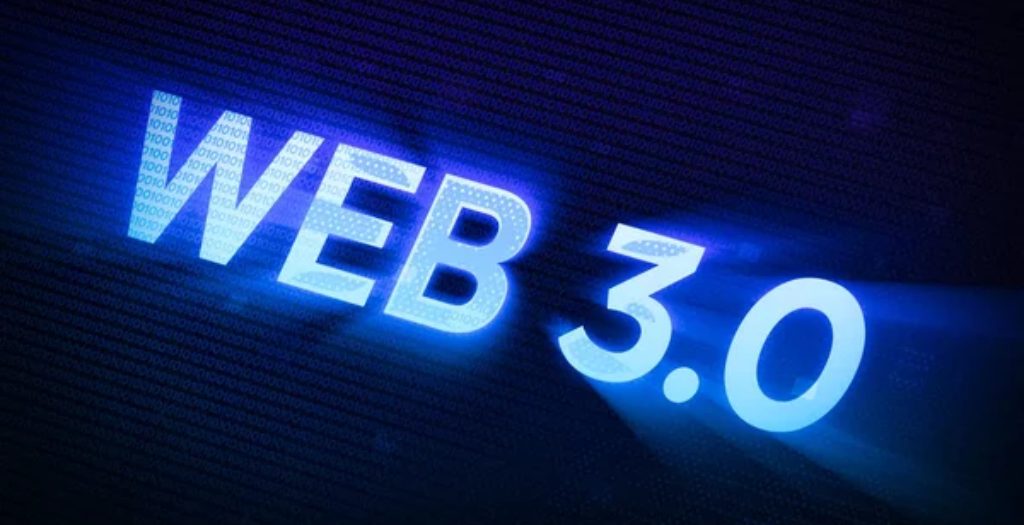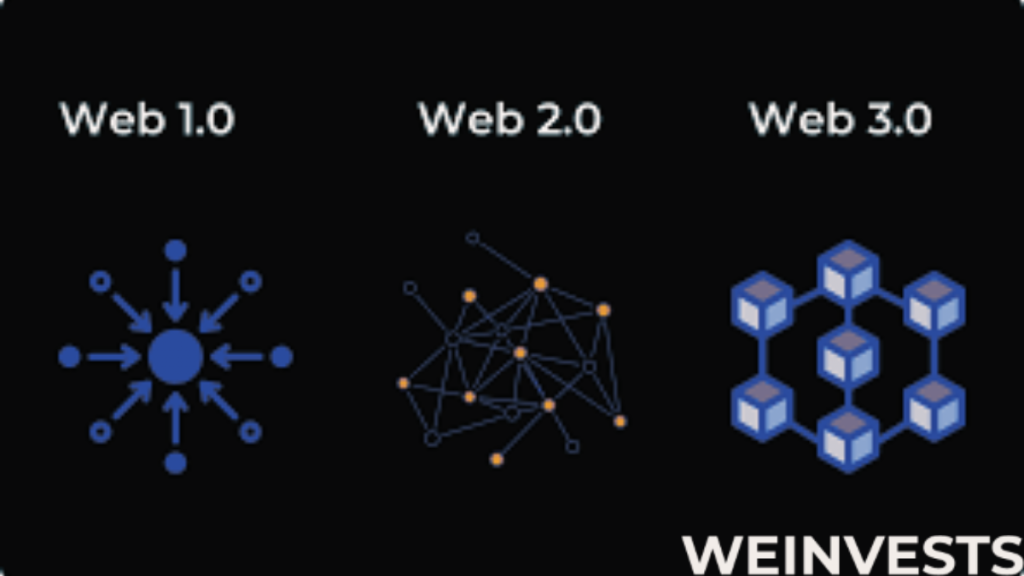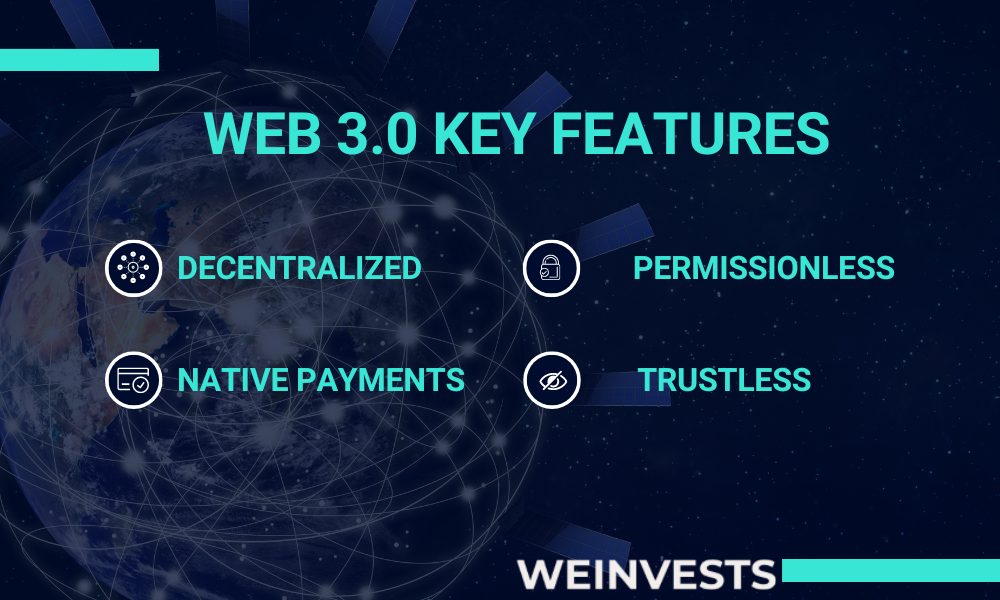This content represents the writer’s opinions and research and is not intended to be taken as financial advice. The information presented is general in nature and may not meet the specific needs of any individual or entity. It is not intended to be relied upon as a professional or financial decision-making tool.
Why is the subject of web3 coming up recently?

The Internet is evolving and web3 will be the new paradigm in web interaction. It’s imperative for brands to prepare for the fundamental change in how they engage with users and consumers who expect a more blended digi-physical experience online.
The web3 industry is redefining how technology should function and what it means to create value and utility for users. As the world continues to teeter on the brink of chaos because of the uneven distribution of resources and center-oriented control, web3 technologies are the ones to provide a way out.
We are seeing the web3 industry maturing, and the use cases are also rising. From chain-agnostic metaverses to niche-specific ecosystems that solve end-to-end problems, 2023 will be the year of web3 ecosystems. This interaction between web3 ecosystems is revolutionary, overcoming many barriers. More and more brands and tech giants are turning towards web3 and blockchain-oriented services to grow their internet presence and establish the new digital paradigm. Web3 is slowly breaking the world free of that monopolistic control as it increases the number and quality of available services for onboarding.
Table of Contents
The History of the web

There is a widespread belief that the Web is a vital part of modern life and as such – it has undergone various periods of development characterized by different trends and advancements. The Internet is a complex and diverse structure that’s constantly changing. To better understand the evolution of the web, it’s important to break it down into three different periods: Web 1.0, Web 2.0 and Web 3.0.
The rise of centralized entities greatly contributed to the development of the World Wide Web. They created a robust and stable infrastructure that allows people to access the internet. At the same time, centralization resulted in a few groups having a significant presence on the vast majority of the web.
This created the following dilemma: If the web is to be truly decentralized, it needs to be operated and owned by its users instead of large technology companies. Web3 is the answer to this issue. Instead of being monopolized by large organizations, it’s being built and operated by its users.
Web 1
Web 1.0 (the 1980s to 2000) is often referred to as the first stage of the internet. It was characterized by static web pages, custom pages built by companies to target a specific audience, and banner marketing.
These static websites allowed for near-zero interaction between users. Individuals hardly produced content, which resulted in Web 1 being known as the read-only web.
Web 2
The rise of social media platforms in 2004 marked the beginning of the Web 2.0 era. Instead of providing content to users, companies started to provide platforms that allow users to interact with each other and share their content. As more people started using the internet, a few prominent companies started to control a huge amount of the traffic and value that the web generates.
The rise of Web 2.0 led to the creation of the advertising-supported revenue model. While users were free to create content, they didn’t own it. Web 2.0 began in 2000 and was well in development until 2010 although it still continues today. That period was marked with the creation of the term ‘World Wide Web’ and internet access became less expensive, leading to its end users finally becoming content creators.
Web 3
The next stage in the evolution of the internet is referred to as Web3. Web3 aims to be more inclusive and enterprise-focused than previous versions. Web 3.0 (2010 and above) marks the current state of the Internet characterized by A. I infused mobile phone applications, 3D graphics, and blockchain technology.
The development of Web3 is being carried out by a diverse coalition of businesses, nonprofits, and independent developers. It works towards decentralization and granting more control to users as opposed to centralized entities. Web3 is essentially the next generation of architecture and device computing and the internet as we know it. It combines concepts like machine learning, artificial intelligence, and the Internet of Things (IoT) to innovate and provide benefits like expanded computing power and better technological learning.
Web3 Key features
The goal of Web 3.0 is to create a more efficient and user-friendly internet. Its design is closely related to the original vision of Sir Tim Berners-Lee, who was one of the founding fathers of the Internet. He envisioned a distributed network that didn’t have a single point of failure. The goal of Web 3.0 is to establish a more decentralized and efficient internet. This will be achieved through the decentralization and interconnection of data across various networks.

It is challenging to provide a single, straightforward definition of what Web3 is. However, there are several core principles that guide its development.
Web3 is decentralized
instead of large parts of the internet being under the control and ownership of centralized entities, ownership gets distributed amongst builders and users.
Web3 is permissionless
everyone has equal access to participate in Web3, leading to greater inclusion.
Web3 has native payments:
it integrates cryptocurrency to spend and send money online in place of the outdated services and infrastructure of banks and payment processors.
Web3 is trustless:
it operates using incentives and economic mechanisms instead of relying on trusted third parties.
Best Web3 wallets as of now
There are a wide range of Web3 wallets available in the market, and most of them are free to download. Although the ecosystem is still fairly new, the best-used and popular wallets have served as a foundation for establishing an open and fair internet.
MetaMask
One of the most popular wallets in Web3 is MetaMask. It has over 21 million monthly active users, and its user-friendly interface allows users to interact with the blockchain. Through its application, users can purchase ERC-20 tokens, which makes it a non-custodial wallet.
Metamask is an open-source platform that supports trading on various custom chains, such as the Binance Smart Chain. It also gives users more control over their private and public keys. Due to its large community and popularity, it can connect to other decentralized applications.
Coinbase Wallet
Coinbase is a leading U.S.-based cryptocurrency exchange, and its popularity can be attributed to the fact that it is a non-custodial wallet. Unlike a centralized exchange, which is why it is commonly used, a Coinbase Wallet is used to transfer assets from one account to another.
Although Coinbase Wallet is a separate app from the one used by users to interact with Coinbase, it has a proven track record of security. It also comes with various features such as a PIN and biometric security.
Trust Wallet
Trust Wallet is a Web3 Multi-asset wallet. It supports a wide range of assets and cryptocurrencies. It has become a single-platform that can support multiple chains, making it a blockchain agnostic wallet. A trust wallet allows users to earn from their digital assets while still being non-custodial. Despite its numerous features, the wallet doesn’t charge a fee for its services.
A decentralized future
The rise of decentralized crypto networks, also known as Web3.0, marks a shift in how people and organizations interact with each other. These new networks will replace traditional intermediaries such as Web 2.0 and allow people to conduct transactions in a more secure and open manner.
Both blockchain and Web 3.0 aim to provide transparency and openness. The goal of blockchain is to ensure that insights are organized as blocks and that their cryptographic hashes are highly secure. If Web 3.0 is implemented, everyone will have access to various applications, content, and resources, as long as the necessary keys are in place. There will also be a variety of decentralized options that will make the universe more welcoming.
The development of Web 3.0 is being carried out by a diverse coalition of businesses, nonprofits, and independent developers. This is why it’s important that the top cryptocurrencies are involved in the project. As blockchain technology allows for the creation of more open internet, it will eventually allow for the automation of certain operations.
FAQ
What is web3?
Web3 is a decentralized technology stack that replaces the centralized infrastructure of the internet, creating a more open and equitable world. It’s the next generation of the internet, where instead of relying on centralized intermediaries to manage data and transactions, the users have control over their own data and assets. The most important aspects of web3 are:
What are the benefits of web3?
Web3 offers several benefits over traditional centralized web technologies, including:
- Security: Web3 technologies are less susceptible to hacking and other forms of cybercrime because they rely on cryptographic algorithms to secure transactions and data.
- Privacy: Users have more control over their personal data, and can choose what information they want to share with others.
- Decentralized finance: Web3 enables the creation of decentralized financial systems, which allow for peer-to-peer transactions without the need for intermediaries.
- Censorship resistance: Decentralized systems are less susceptible to censorship, as there is no central authority that can be pressured to remove content or restrict access.
The most important benefits of web3 are:
- Enhanced privacy and security: By removing intermediaries and putting users in control of their own data, web3 technologies make the internet a safer and more private place.
- Accessibility: Web3 technologies have the potential to bring financial services and other applications to people who were previously excluded from them due to geography, financial status, or other barriers.
- Increased transparency: Web3 technologies increase transparency and accountability in areas such as finance, governance, and supply chains.
What are the current challenges with web3?
Despite its potential, web3 is still in its early stages and there are several challenges that need to be addressed before it can reach its full potential:
- Scalability: Web3 technologies are currently not as scalable as centralized systems, which means that they may not be able to handle the same volume of transactions and data as traditional systems.
- User experience: Web3 technologies can be difficult for non-technical users to understand and use, which makes them less accessible to the general public.
- Regulation: Decentralized systems are not yet regulated, which means that there is a risk of illegal activities such as money laundering, tax evasion, and other forms of financial crime.
The most pressing challenges of web3 are:
- Usability: Making web3 technologies easy for the general public to use and understand is a key challenge that needs to be addressed.
- Regulation: Developing clear and fair regulations for decentralized systems will be crucial for their widespread adoption.
- Scalability: Improving the scalability of web3 technologies so that they can handle the demands of a global user base will be necessary for their long-term success.
What are some use cases for web3?
Here are some use cases for web3 technology:
1. Decentralized Finance (DeFi)
- DeFi refers to the use of blockchain technology to provide financial services without intermediaries
- DeFi platforms allow for peer-to-peer transactions, resulting in lower fees and increased accessibility
- Some popular DeFi applications include lending and borrowing platforms, decentralized exchanges, and yield farming.
2. Digital Identity and Data Ownership
- Web3 technology provides a way for individuals to have more control over their personal data
- Users can manage their digital identity and have the ability to control who has access to their data
- Web3 technology enables secure storage and transfer of personal data, allowing for more privacy and control.
3. Gaming and NFTs
- Non-fungible tokens (NFTs) are unique digital assets that can represent ownership of virtual items such as in-game items, collectibles, and more
- Web3 technology enables the creation of NFTs on the blockchain, providing a secure and decentralized way to transfer ownership of these assets
- This opens up new opportunities for gaming, including creating new marketplaces for buying and selling virtual items, and enabling new gaming experiences through the use of NFTs.
4. Supply Chain Management
- Web3 technology provides a way to track the flow of goods and information throughout the supply chain in a secure and transparent manner
- This can help improve efficiency and reduce costs, as well as increase accountability and reduce the risk of fraud
- Web3 technology can also provide a way to securely store and transfer important supply chain information, such as product specifications and certifications.
5. Decentralized Autonomous Organizations (DAOs)
- DAOs are decentralized organizations that operate through code, rather than through traditional management structures
- Web3 technology provides a way for DAOs to be run in a transparent and secure manner, with decisions made through consensus among stakeholders
- This allows for more decentralized decision-making and reduces the risk of single points of failure in traditional organizational structures.
These are just a few of the many potential use cases for web3 technology. As the technology continues to evolve and mature, new use cases and applications will likely emerge.
WeInvests is a financial portal-based research agency. We do our utmost best to offer reliable and unbiased information about crypto, finance, trading and stocks. However, we do not offer financial advice and users should always carry out their own research.
Read More



